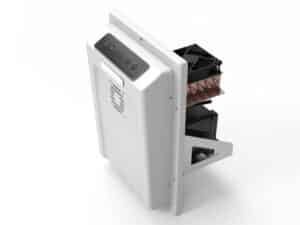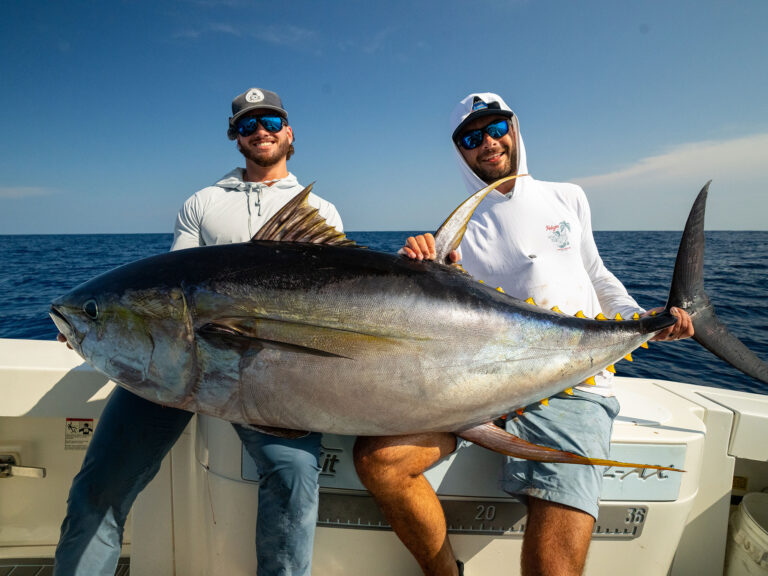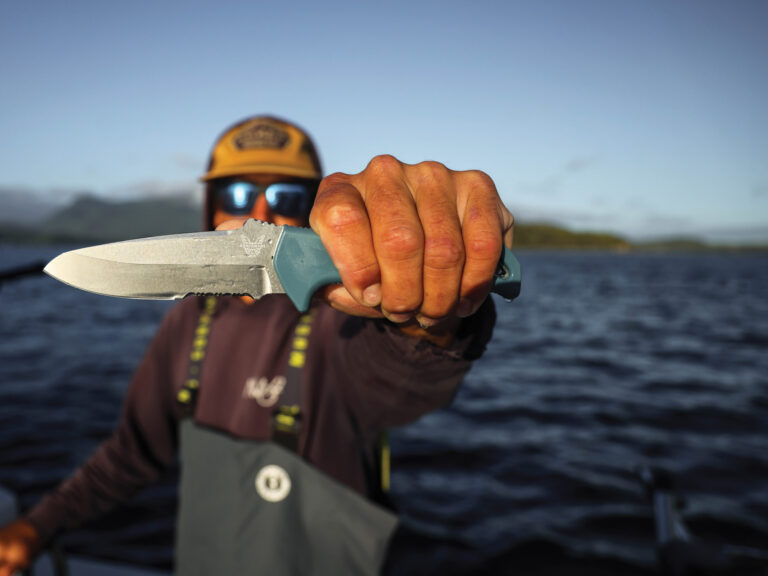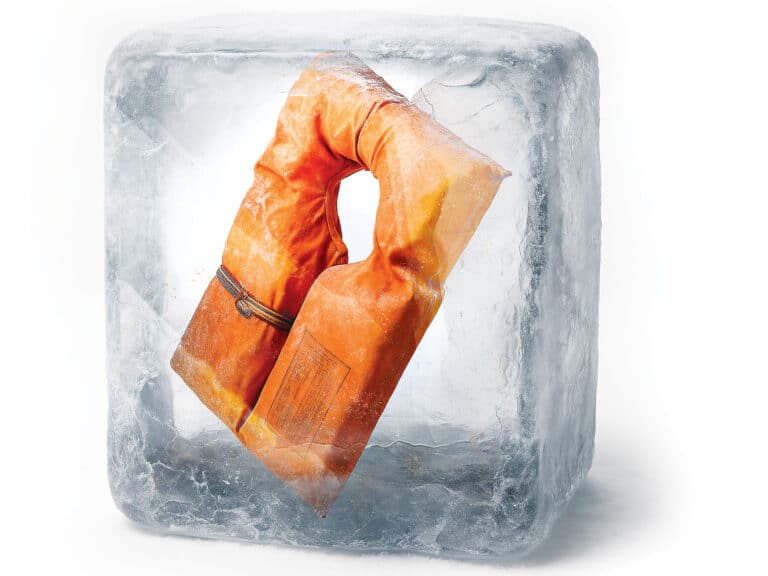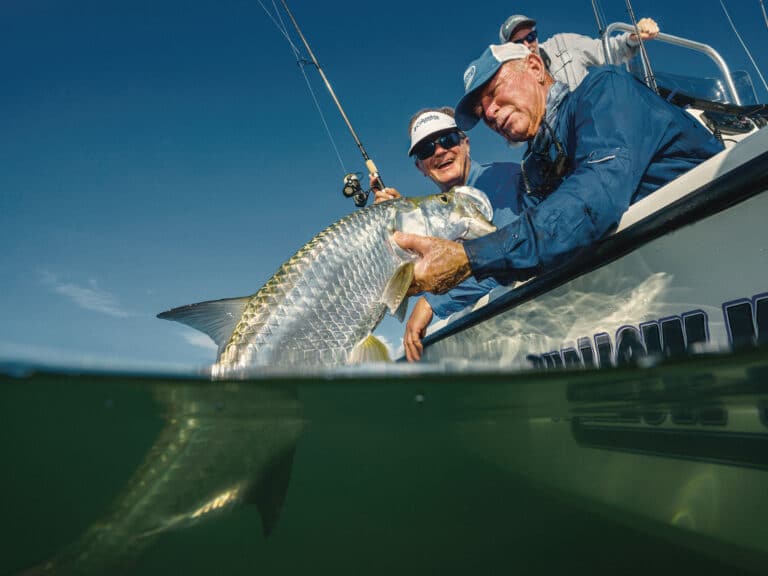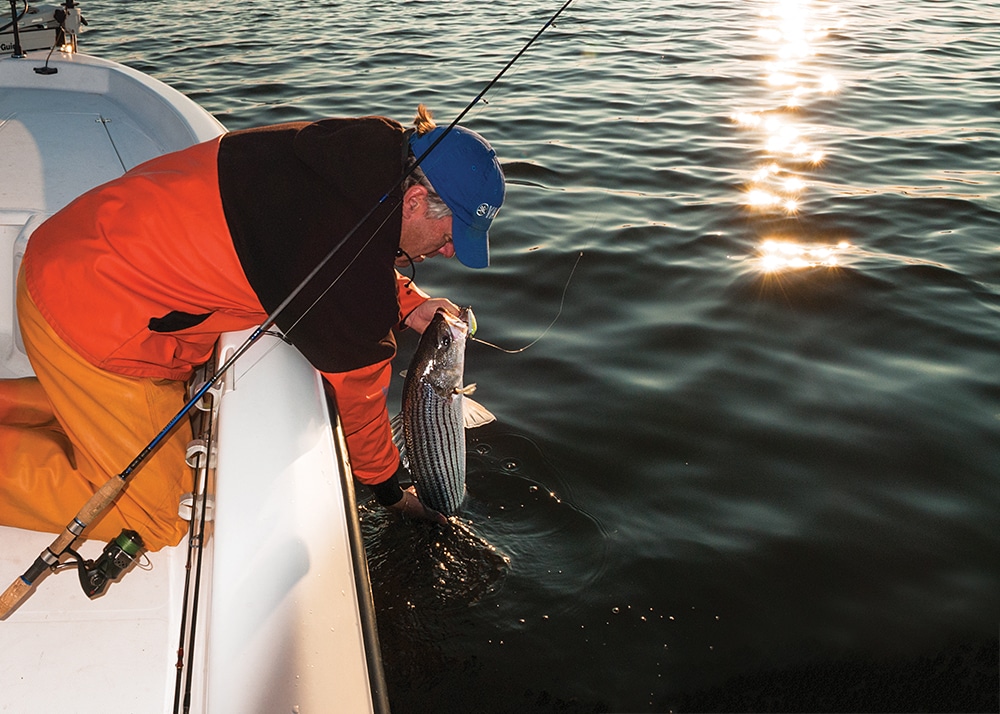
Sunlight sparkled off the spiked dorsal fin poking out of the clear, flat water, shimmering like wet diamonds. One wave of the rod and the fly landed silently in front of the oncoming V wake. A few quick short strips, the fin made its move and — hook-set!
Sounds like a perfect day on the Bahamas flats, but this isn’t some tropical island. It’s New Jersey.
Twenty years ago, I was introduced to the world of flats fishing for striped bass in Jersey’s shallow bays, where light tackle and stealth proved the perfect combination to score with stripers in ultra-skinny waters. A secret society of finesse fishermen, armed with scaled-down gear, continues to stalk stripers on the flats with great success.
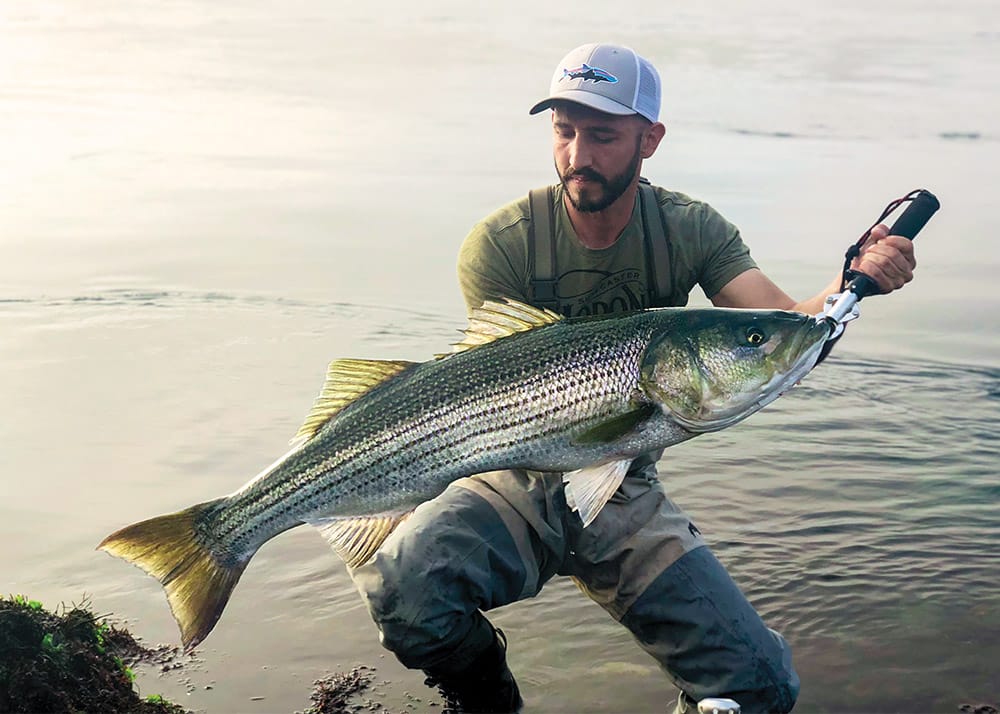
Stealth Mode
Forget about rumbling diesel vessels, “grind ’em in” reels, and wire lines. Leave all the muscle-bound stuff at home. Low-profile skiffs and light tackle are key here.
In general, flats stripers run from 20 to 36 inches and upward of 15 pounds, and though bass fishing in the ocean isn’t about quietude, plying the backwater flats is.
Capt. Brian Williams of Badfish goes total stealth. “Many times we fish from 2 to 4 feet of water, where bass hear any commotion on deck and see shadows from your profile,” he says.
Trolling motors or push poles allow the boat to creep through a channel or slip up on an overhang or bay flat. “The key is to be super-silent, drifting or anchoring with the pole in the mud bottom,” Williams says.
“The trolling-motor position hold works great to stem the tide when setting up on an area to make precision casts.”
Capt. Al Crudele of Bayhound concurs. “Absolutely no noise is the rule, not even waves hitting on the side of the boat. You need to be quiet, as silence is everything. If you spook the bass off the flat, you might as well just pack it up.”
Here, the strategy for casting is stealth and pinpoint accuracy; think precision like a rifle rather than a shotgun blast. “When fishing the shallows, you’re not trophy hunting, you’re simply searching for a reward to a well-placed cast,” Williams says.
Crudele adds: “Don’t spook the fish, throwing the big stuff that surprises and scares them. Be subtle and use smaller, low-profile lures instead.”

Tide and Temp Matter
There’s a marked difference to planning your fishing excursions through the seasons. “Springtime water temps generally fluctuate between 53 and 60 degrees and allow an all-day bite. But you need to plan and anticipate the temperature swings — as much as 15 degrees or more — since the sun warms the flats on the low tides,” Williams says.
“Outgoing tides are usually best, as they will be the warmest. Plan for the warmer-water tides and you can pretty much catch fish throughout the entire day, monitoring the water to find the optimal feeding temperatures.”
But the strategy flips come summertime. “It’s almost a reverse situation from the spring: You want to fish in the cooler hours, pre-dawn and sundown, rather than in the middle of the day,” Williams says.
Tactics and techniques vary depending upon the season. In hot weather, fish seek protection in the shadows of the sod banks, which are still shallow but provide a roof over their heads that keeps them cool.
Crudele expounds: “As ambush predators, bass always have to have somewhere to hide, and that’s usually a deeper hole or pocket. When you search for productive flats, select shallows that are adjacent to deeper water, as bass position themselves in opportune places, where forage gets swept off the edge of the flat,” he says. “Look for deep cuts along ledges, and always study sandbars at low tide so you can plan your attack when the water gets deeper.”
In spring and fall, bass seek warmer water. During the summer, they want it cooler. But they always want it around that mid- to high-60-degree range.
“In July and August, it’s a topwater bite, where bass will seek cooler water. It’s the opposite in the spring and fall, when they search out warmer water,” Crudele says. “Incoming tides in the summer usually carry cooler ocean water that’s refreshing to the fish. In spring and fall, it has a chilling effect.”

Right Stop, Right Cast
Once you’ve figured out time, tide and temperature to the best of your ability, plot a strategy. “Low tide pushes fish into the channels, so you want to concentrate on fishing there,” Williams says. “A rising tide pushes the bass onto flats that were exposed but now lie under 2 or 3 feet of water.”
Both captains agree that it pays to look for creek mouths where the tide spilling into a bay has created a depression on the bottom. The bass stack up in these run-outs, feeding on the forage that comes near them as it spills out with the current.
“Fish the slight depressions in the bay bottom; it could be only a 6-inch increase in depth, but it makes a world of difference. That’s where bass can hang out and feed,” Williams says. When working an area, understand that it’s not always about fishing just one hole or one flat. A flat can have five or six smaller productive spots within it, where the creek outflow and inflow cuts deeper channels.
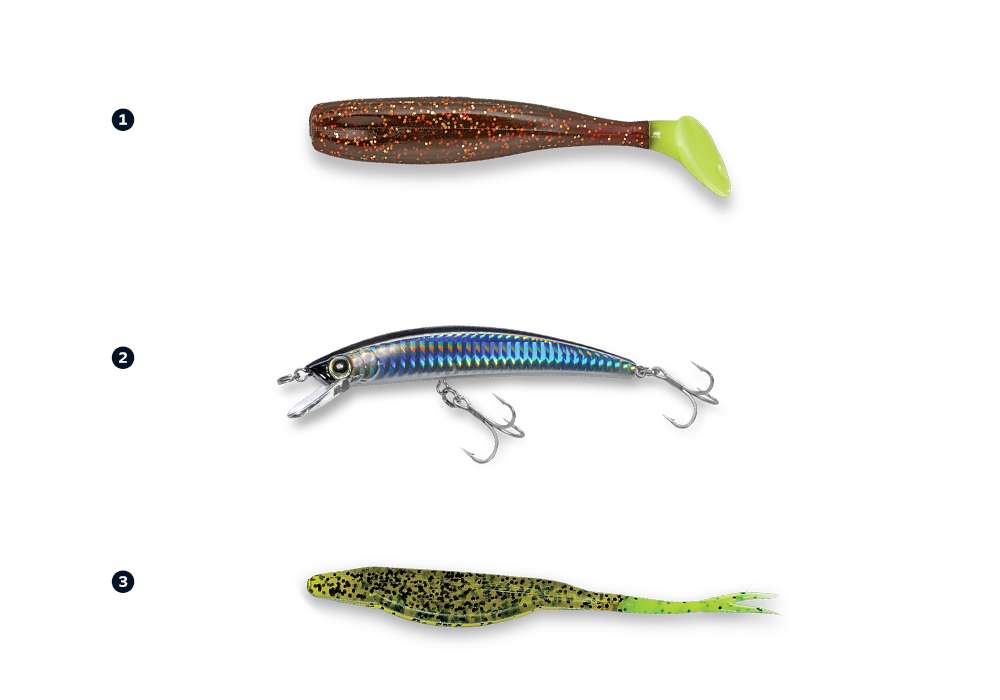
[2] Shallow runners, such as the Yo-Zuri Floating Crystal Minnow, are ideal for middepth work.
[3] Soft plastics, like the Zoom Super Fluke, land softly and produce enticing action. Courtesy D.O.A., Yo-Zuri, Zoom
Williams opts to toss a D.O.A. C.A.L. on a light 1⁄4- to 3⁄8-ounce lead-head and works the bait with a slow retrieve — just off the bottom — through the depressions. If it’s a consistently shallow flat, he breaks out a fly rod and tosses a Half-and-Half fly (Clouser and Deceiver hybrid) that lands in the skinny water with little disturbance.
Light weight is essential, whether using a fly or a soft-plastic bait. “As water spills off the flat on the outgoing tide, I use the lightest lead-head I can get away with and still maintain control, even down to 1⁄8 ounce,” Crudele notes. “Let the tide wash it off the flat naturally, without even retrieving it. Just maintain contact as it drifts.”
Sod banks lining the water offer promising protection for stripers. The overhangs create shadow lines where bass wait on the dark side to ambush prey. “Those lines are different from sunrise to sunset; you play the angles of the shadows and adjust accordingly at different times of day,” Williams says.

[5] Noisemakers, like the Z-Man ChatterBait Bucktail Jig, add sound to the attraction. Courtesy Lunker City, Z-Man
Small topwater poppers, like the 3-inch Stillwater Smack-It or a Z-Man ChatterBait, create the commotion needed to get a summer flats bass to hit. Cast poppers right against the sod banks, then work them until they’re 10 feet off the bank. If there is no hit, reel up and cast again. Stripers pounce from the shadow line and won’t usually follow the lure far off the bank.
Next time you are looking for a flats challenge and a little off-the-beaten-path adventure, don’t just consider tropical island destinations. Why not go off the grid closer to home instead and plan to stalk striped bass on the Jersey flats?


